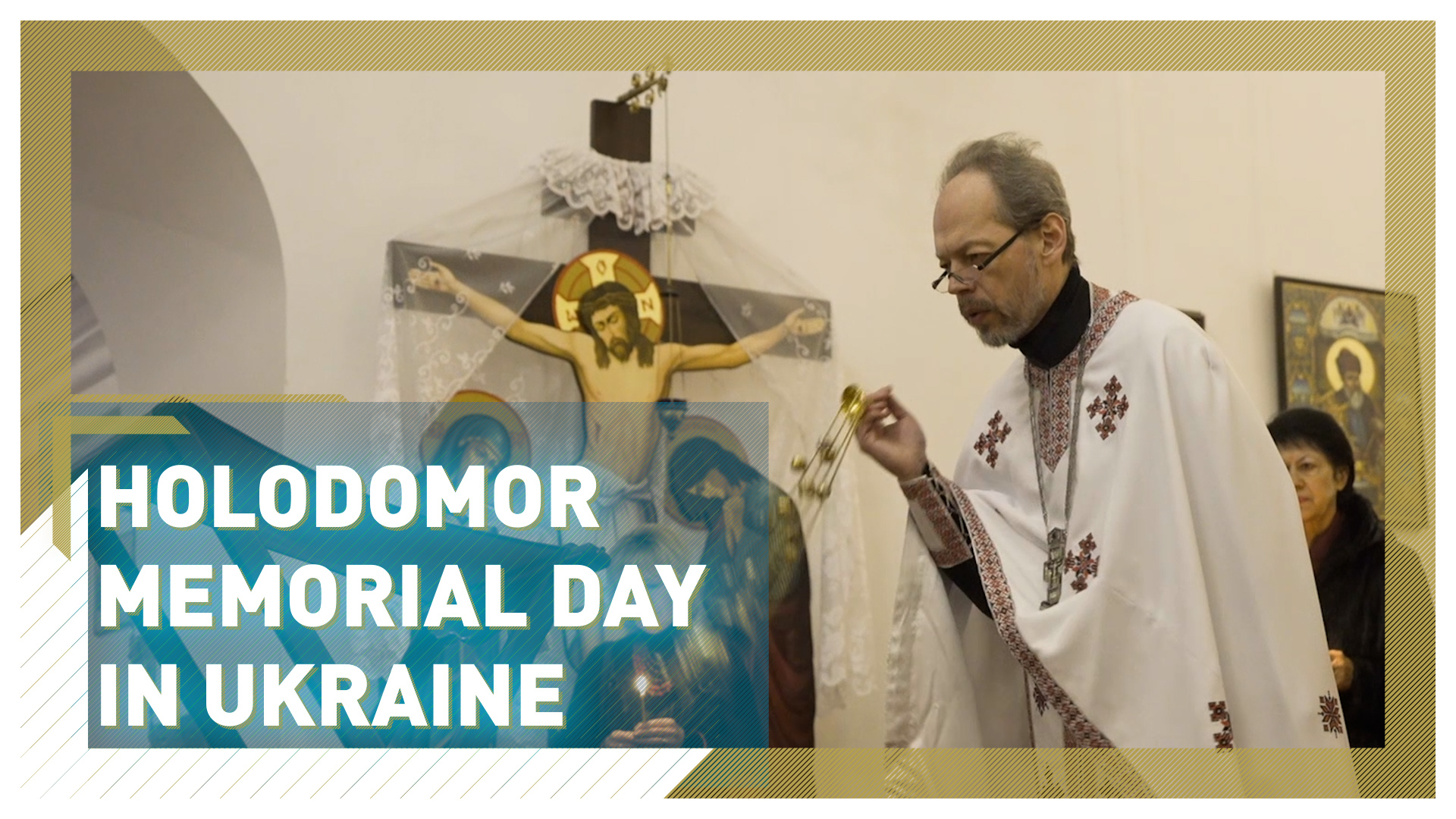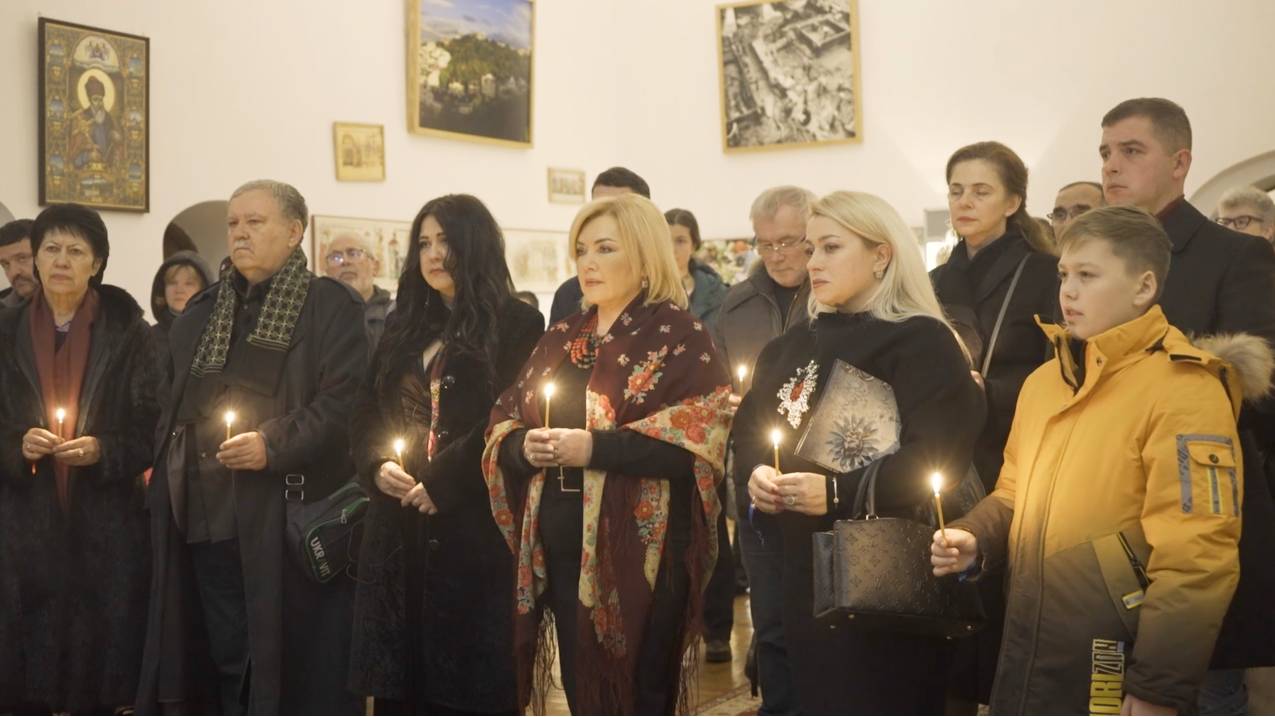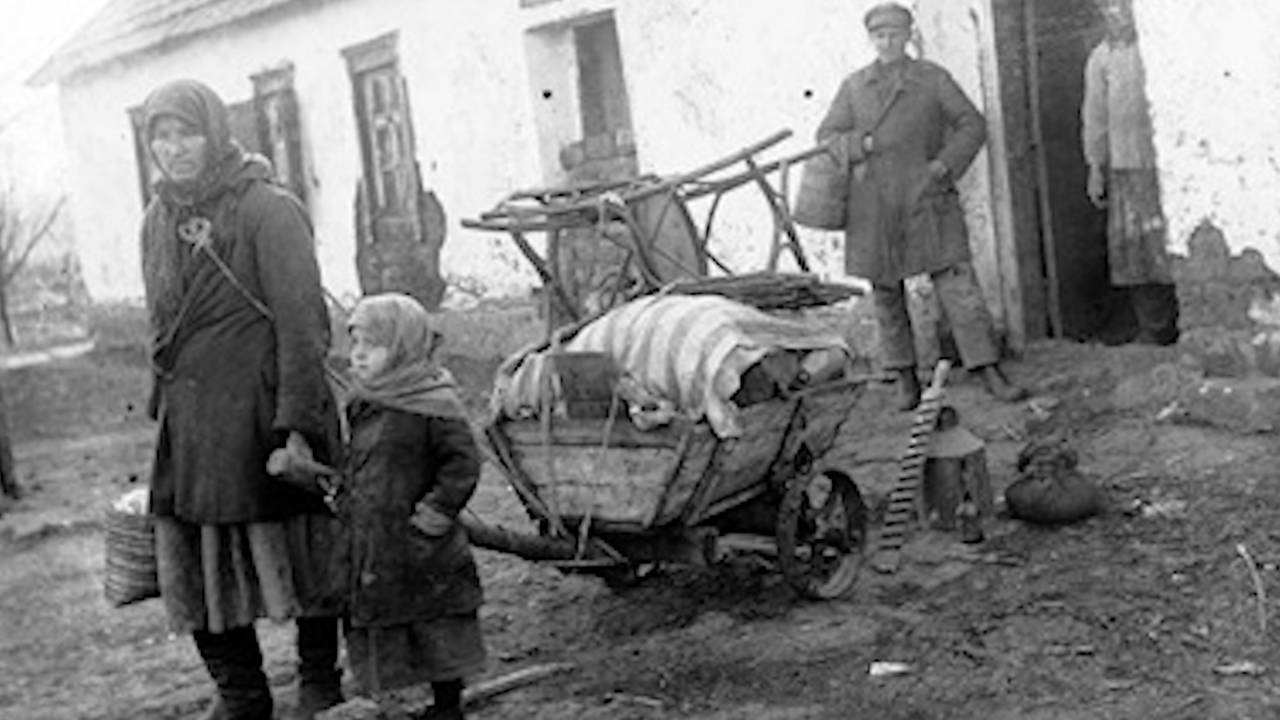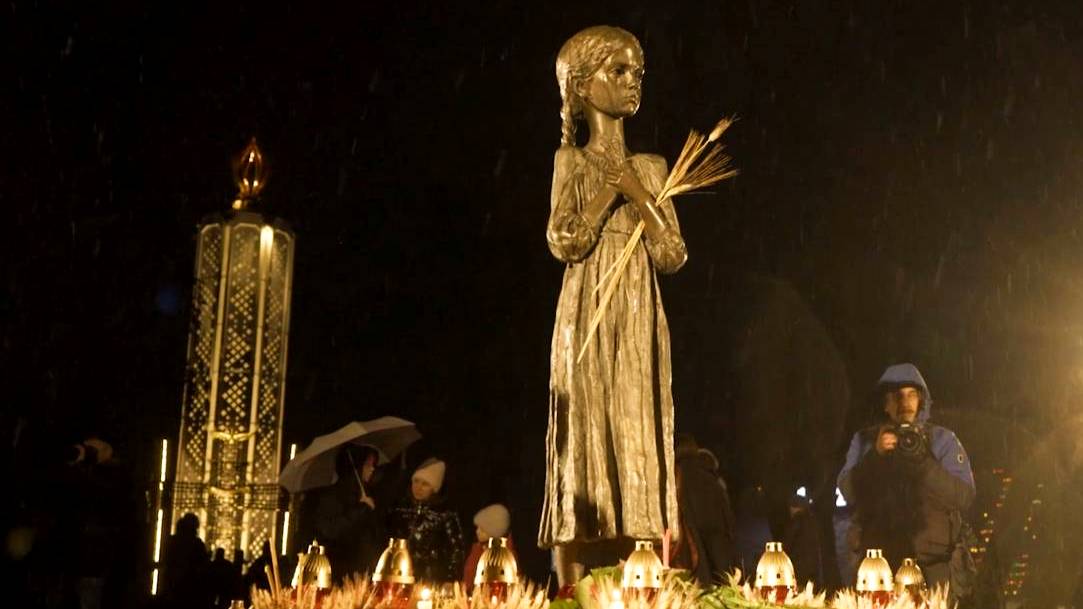03:18

For many Ukrainians, the years 1932 and 1933 are among the darkest in their history. It was during this period that between 4 and 7 million of their people died of starvation.
They call it the 'Holodomor' – which means 'death by starvation' – but it is also known as The Great Famine or Terror Famine. Every year on November 26, millions of Ukrainians pay tribute to those who died with a series of events that last throughout the day. This year, my producer, Olga – herself a Ukrainian – and I went along to pay our respects.
READ MORE
Spanish police raid Europe's drug 'super cartel'
The family with six generations of UK-China trading
China's forgotten heroes
The day started with a moving service at the beautiful St Sofia's Cathedral in the heart of the capital, Kyiv. Among the congregation were descendants of the victims, politicians, historians, and a whole host of other influential people from Ukrainian society.
We met Iryna, a lawyer. She told us more than two dozen of her ancestors died during that terrible time. "When I was a child, I heard stories from my great grandmother about the Holodomor," she revealed. "Twenty-five members of my grandparents' extended family, including 12 children, died of hunger. It is a tragedy for me. It causes me great pain."

Descendants of the Holodomor victims were among those to attend the service at St Sofia's Cathedral in Kyiv. /CGTN Europe
Descendants of the Holodomor victims were among those to attend the service at St Sofia's Cathedral in Kyiv. /CGTN Europe
Bread is also baked and shared on this day, to symbolize the end of hunger – a gesture all the more poignant because Ukraine, known as the breadbasket of Europe, is the fifth-largest exporter of wheat in the world.
In the afternoon we attended a series of speeches, poetry recitals, dance performances and songs that not only served to remember the victims, but also to draw parallels between what happened in the 1930s and current events.
Volodymyr Viatrovych is a historian and the director of the National Institute of Memory. "The aim of Holodomor was to destroy the Ukrainian nation. Villagers were killed because they were the main carriers of our identity," he told us. "It was on a massive scale.
"Now, the same thing is happening because civilians are being killed. The only difference is the scale, and that's only because we now have our own state and army."
Many in Ukraine believe the famine was a deliberate attempt by Josef Stalin, the leader of the Soviet Union at the time, to prevent Ukrainian independence. But others say it was the tragic consequence of his botched plans to collectivize agricultural land and the consequences of that, though terrible, were not intentional.

Many in Ukraine believe the famine was a deliberate attempt by Josef Stalin to prevent Ukrainian independence. /CGTN Europe
Many in Ukraine believe the famine was a deliberate attempt by Josef Stalin to prevent Ukrainian independence. /CGTN Europe
Ukraine and 15 other countries, including Germany and Romania, describe the events as a genocide. The UN defines it as a 'national tragedy.' Russia also formally acknowledges the famine, but denies it was genocide, claiming that the famine affected the Soviet Union as a whole, and that other ethnic groups also starved to death. Most other nations acknowledge that, at the very least, it was a man-made tragedy.
Ukrainian politicians have for some years been trying to raise awareness about the Holodomor. We met Oksana Bilozir, a well-known Ukrainian singer and former Minister of Culture. She said: "We started discussing this topic in 2004 after the Orange Revolution, and during the presidency of Viktor Yushchenko. Before then, the subject had been suppressed. Subconsciously, people were too scared to talk about it. But we reached a point where we had to admit what happened to ourselves and to the rest of the world."

Ukrainians express their sorrow for the famine by leaving gifts at the foot of a statue of a starving girl holding a few stalks of grain. /CGTN Europe
Ukrainians express their sorrow for the famine by leaving gifts at the foot of a statue of a starving girl holding a few stalks of grain. /CGTN Europe
We ended our day by visiting the Candle of Memory, a giant construction in the center of Kyiv that emitted an iridescent glow over the power-starved blackened sky. Beside it stood the haunting statue of a starving girl holding a few stalks of grain, and at whose feet Ukrainians expressed their sorrow and respect with gifts food, flowers and candles.
Ukraine also suffered two other famines while it was part of the Soviet Union – one in the early 1920s and the other in 1946 – but the numbers of those who died in those instances are believed to be fewer than the famine of the 1930s. For the Ukrainians however, it is less about the numbers and more about the sustained suffering they have endured throughout history – a suffering, they say, that has yet to end.